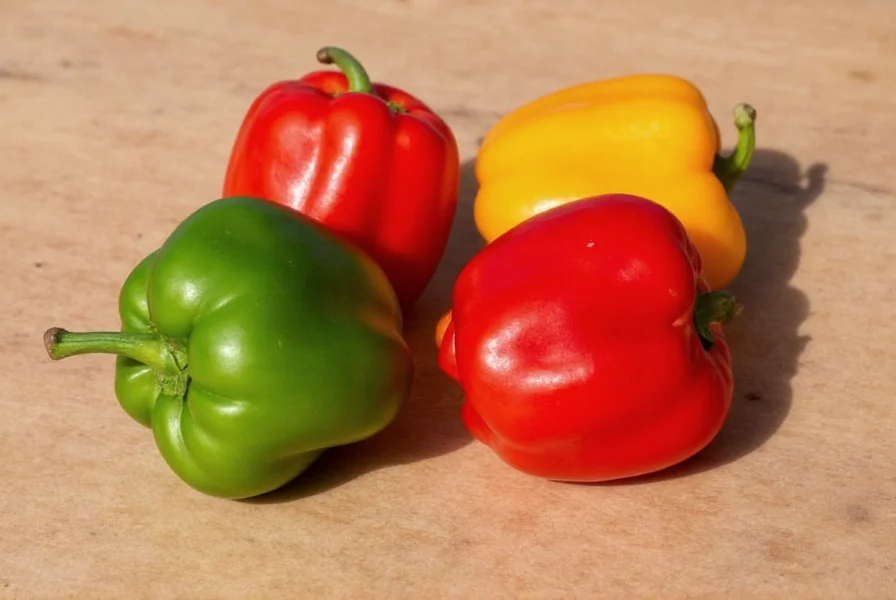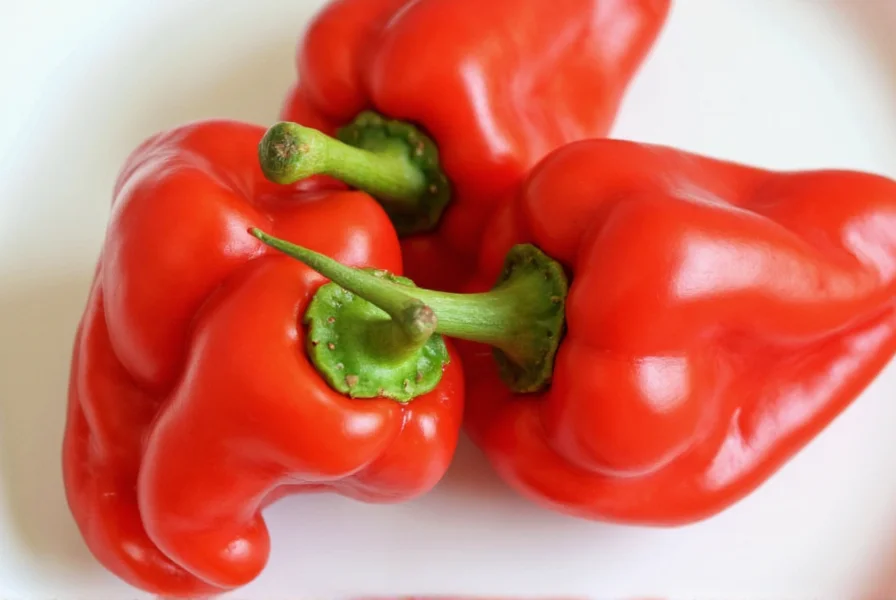Sweet Heat or Mild Treat? Unwrapping the Secrets of Sweet Chile Peppers
Table of Contents
- Introduction: What Are Sweet Chile Peppers?
- Popular Varieties of Sweet Chile Peppers
- The Science Behind the Spice: Understanding Capsaicin Levels
- How to Use Sweet Chile Peppers in Cooking
- Buying Guide: Choosing the Best Sweet Chiles
- Tips for Growing Your Own Sweet Pepper Garden
- Storing and Preserving Sweet Chiles
- Pairing Sweet Chiles with Other Ingredients
- Conclusion: The Versatile World of Sweet Chiles
Introduction: What Are Sweet Chile Peppers?
Sweet chile peppers — they might sound like a contradiction at first, but these vibrant fruits are where mild heat meets natural sugar. While their spicier cousins get all the attention, sweet chiles bring flavor without the fire. Perfect for those who want to enjoy a touch of warmth without the tears.
If you're new to cooking with peppers or just looking for milder options that still pack character, this guide is your passport into the deliciously subtle world of sweet chile peppers. Whether roasting, stuffing, or tossing into salsas, there's a whole universe waiting beyond the Scoville scale.
Popular Varieties of Sweet Chile Peppers
From bell peppers to poblano relatives, the sweet chile family includes many stars. Here’s a quick rundown of some of the most beloved varieties:
| Name | Heat Level (Scoville) | Flavor Profile | Best Uses |
|---|---|---|---|
| Bell Pepper | 0 | Crunchy, sweet, vegetal | Salads, stir-fries, stuffed dishes |
| Poblano (when unripe, called 'ancho') | 1,000–2,000 | Rich, earthy, slightly smoky | Chiles rellenos, sauces, soups |
| Mild Anaheim | 500–2,500 | Grassy, crisp, mildly spicy | Enchiladas, sandwiches, grilled dishes |
| Cubanelle | 100–1,000 | Lemon-peppery, light bite | Caribbean cuisine, sautés, pickling |
| Jaloro (Yellow Jalapeño) | 8,000–10,000 | Fruity, tangy, moderately hot | Hot sauces, marinades, pickled jalos |
Each of these peppers brings something unique to the table — whether it's color, texture, or flavor complexity. Let’s dive deeper into how these flavors work together and why you should never underestimate a 'mild' pepper.
The Science Behind the Spice: Understanding Capsaicin Levels
When we talk about sweetness in chile peppers, it's not just about sugar content — it's also about what isn’t there: capsaicin. That fiery compound is responsible for heat, and in sweet peppers, it’s either minimal or entirely absent.

Here’s how it works: capsaicin binds to pain receptors in your mouth, tricking your brain into thinking something’s burning. But in sweet chiles, the levels are low enough that most people don't register them as spicy at all. Some, like bell peppers, have zero capsaicin!
The key to understanding these peppers lies in genetics and ripeness:
- Ripeness: As peppers ripen, their sugar content increases, and often their capsaicin decreases.
- Varietal Traits: Some species are naturally more prone to high capsaicin levels, while others are bred for mildness.
- Preparation Methods: Roasting or drying can concentrate or reduce heat depending on how much of the inner membrane (where capsaicin lives) is left intact.
Knowing this helps you select the right pepper for your dish — especially when serving guests with varied spice tolerance!
How to Use Sweet Chile Peppers in Cooking
Now that we’ve got the science down, let’s get back to the fun part — using these colorful gems in the kitchen! Sweet chiles offer endless culinary possibilities. Here are a few favorite ways to incorporate them:
- Roast & Stuff: Poblanos are famous for being roasted, peeled, and stuffed with cheese or meat. Bell peppers do double duty as edible vessels for rice, ground meat, or quinoa mixes.
- Make Salsa Fresca: Dice up red bell peppers and Cubanelles for a vibrant salsa that's perfect with tortilla chips or atop tacos.
- Add to Sandwiches: Thinly sliced Anaheim peppers add crunch and flavor to wraps and paninis.
- Infuse Oils or Vinegars: Gently simmering sliced peppers in oil or vinegar creates a fragrant base for dressings or marinades.
- Dehydrate for Later: Drying sweet peppers makes them easy to store and great for soups or stews.
And don’t forget about grilling — a quick char brings out natural sugars and adds smokiness. Just brush them lightly with olive oil and place directly over medium heat until blistered and tender.
Buying Guide: Choosing the Best Sweet Chiles
Selecting the right peppers at the market can be overwhelming, especially if you're new to the produce aisle. Here’s a handy buyer’s guide to help you make smart choices:
Top Picks for Sweet Chiles
- Fresh Market Bells: Crisp, bright colors, no soft spots.
- Organic Poblanos: Look for dark green, firm skins with slight give.
- Pickled Cubanelles: Tangy, crunchy, and ready to use in salads or tacos.
- Dried Anchos: Deep reddish-brown, flexible, not brittle.
- Mini Sweet Peppers: Tiny bells with bold flavor and zero heat.
Product Spotlight: Mini Sweet Peppers Pack
| Feature | Description |
|---|---|
| Flavor | Sweet, fruity, juicy |
| Size | 2–3 inches long |
| Use Cases | Snacking, roasting, salads |
| Target Audience | Home cooks, kids, spice-sensitive diners |
| Occasions | Healthy lunches, party platters, quick snacks |
Pro Tip: Always smell before buying — sweet peppers should have an earthy, vegetal aroma, not fermented or sour notes.
Tips for Growing Your Own Sweet Pepper Garden
Want the freshest peppers possible? Try growing your own! Sweet chiles thrive in sunny gardens and containers alike. Here’s how to get started:
- Choose the Right Variety: Opt for disease-resistant hybrids like 'California Wonder' or 'Jupiter' for reliable yields.
- Soil Preparation: Use well-draining soil enriched with compost.
- Watering: Keep soil consistently moist but not soggy — peppers hate wet feet.
- Fertilizing: Feed every 4 weeks with balanced fertilizer.
- Harvest Time: Pick when fully colored — green peppers are tasty too, but less sweet.

Growing tip: Companion planting with basil improves flavor and deters pests — win-win!
Storing and Preserving Sweet Chiles
Got extra peppers? Don’t let them go to waste! Here are simple ways to keep them fresh longer:
- Refrigeration: Store unwashed peppers in a paper bag inside the crisper drawer — lasts up to two weeks.
- Freezing: Chop and freeze raw for later use in soups, stews, and sauces.
- Drying: Hang whole peppers or lay them on a tray in a dehydrator until leathery.
- Pickling: Submerge sliced peppers in a vinegar-brine solution for tangy condiments.
- Oil-Preserving: Slow-roast peppers, coat with olive oil, and refrigerate or can for shelf stability.
Remember: Never seal freshly cooked peppers in airtight containers immediately — let them cool to avoid mold growth.
Pairing Sweet Chiles with Other Ingredients
Sweet chiles are flavor chameleons — they adapt beautifully to a wide range of cuisines and ingredients. Here are some classic pairings:
- Cheese: Queso fresco, goat cheese, feta — creamy textures balance their crunch.
- Meats: Grilled chicken, chorizo, shrimp — enhances umami and adds contrast.
- Legumes: Black beans, lentils, chickpeas — hearty combos perfect for vegetarian meals.
- Acids: Lime juice, balsamic vinegar, tamarind — brightens the flavor and balances richness.
- Herbs: Cilantro, parsley, oregano — elevate freshness and herbal notes.
Pro Pairing Tip: Combine roasted bell peppers with smoked paprika and a drizzle of honey for a surprisingly complex dip or spread.
Conclusion: The Versatile World of Sweet Chiles
Sweet chile peppers prove that you don’t need fire to have flavor. With so many types to explore and techniques to play with, they deserve a permanent spot in your pantry and plate.
Whether you’re roasting them over an open flame, tossing them into a salad, or preserving them for winter, sweet peppers bring joy, versatility, and visual appeal to any meal. So next time you reach for a pepper, remember — sometimes the sweetest things come without the burn.
Now that you’re armed with knowledge, tools, and inspiration, go forth and make your next meal sparkle — with a little sweet heat, of course!










 浙公网安备
33010002000092号
浙公网安备
33010002000092号 浙B2-20120091-4
浙B2-20120091-4